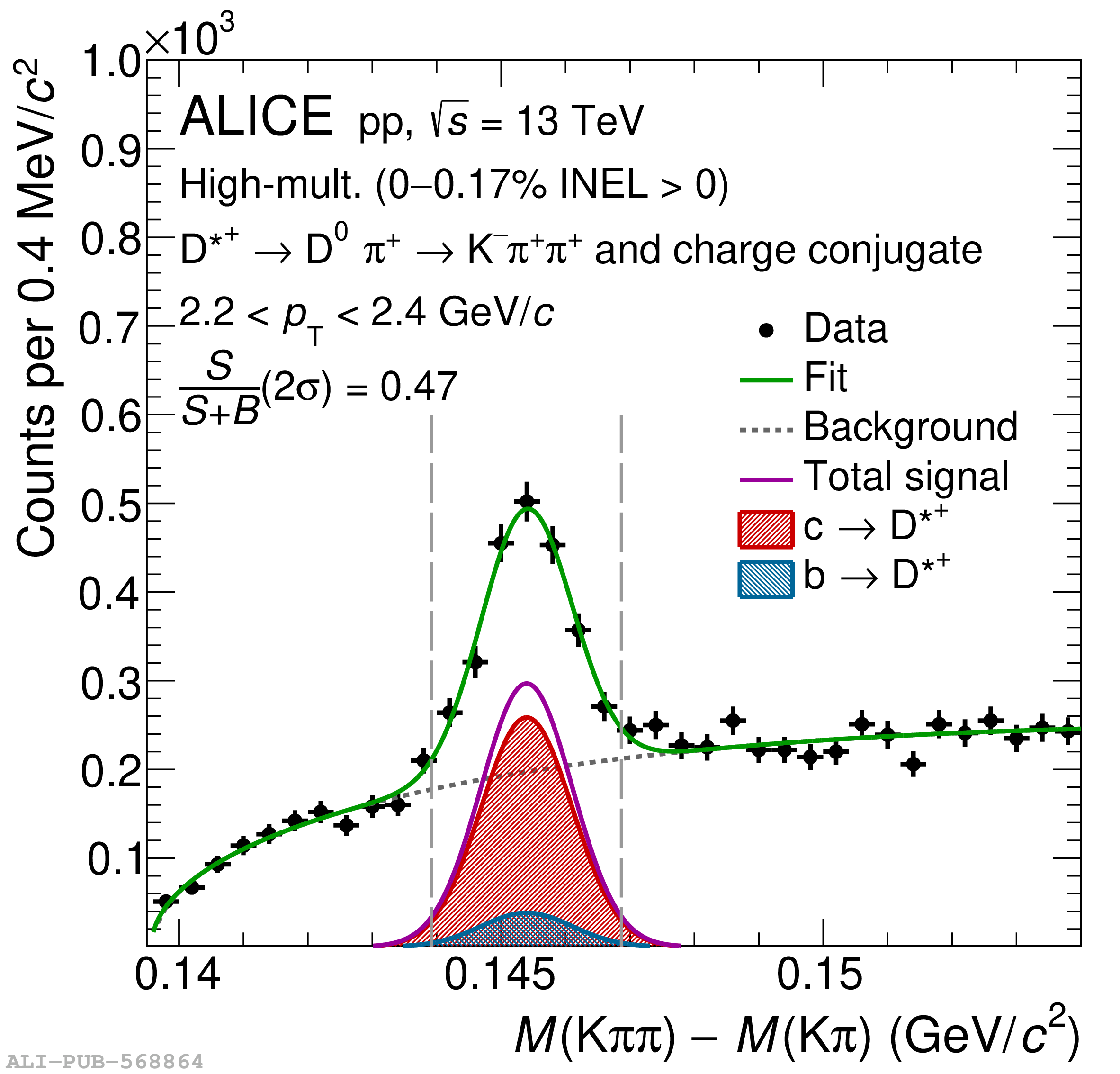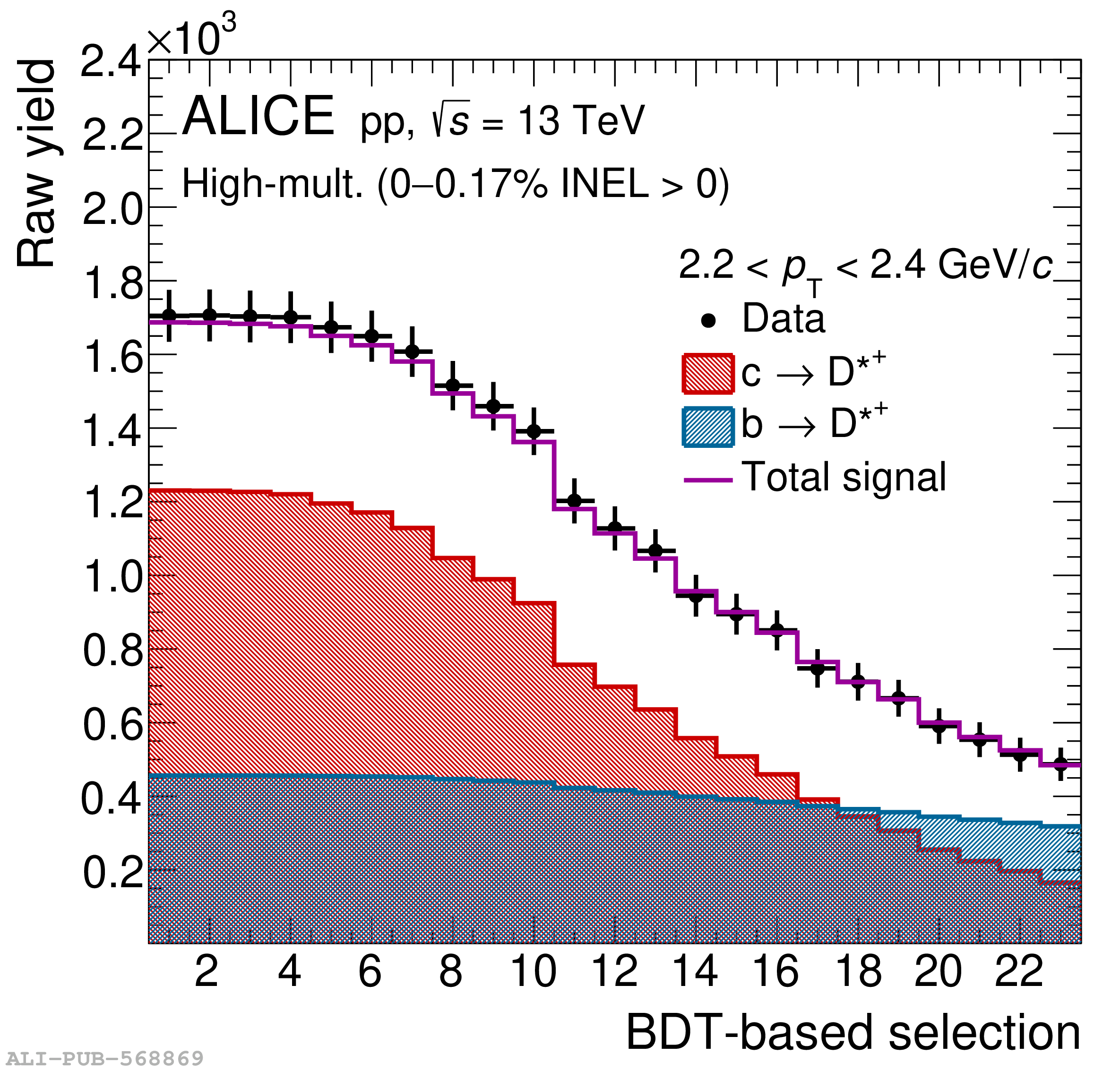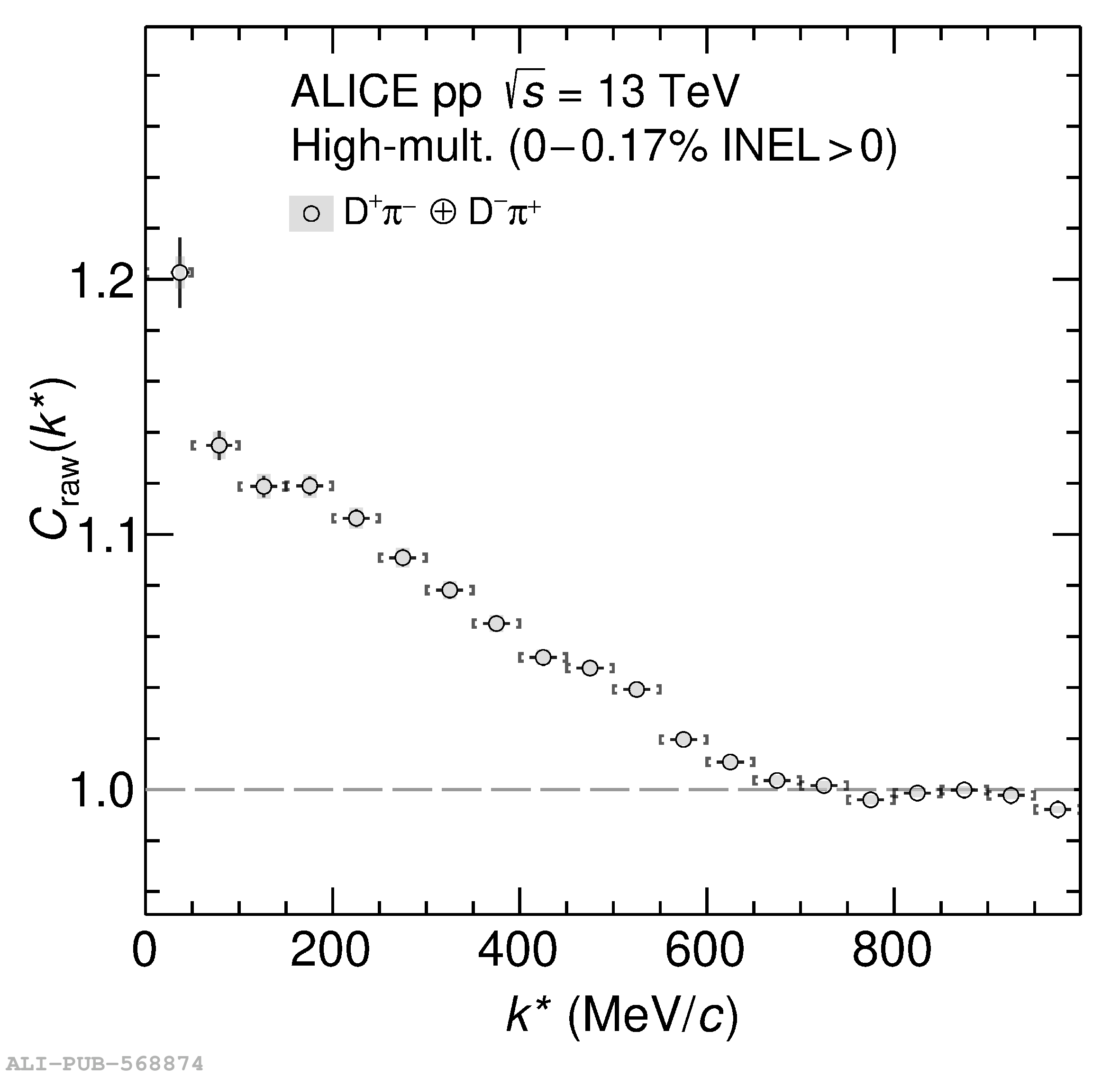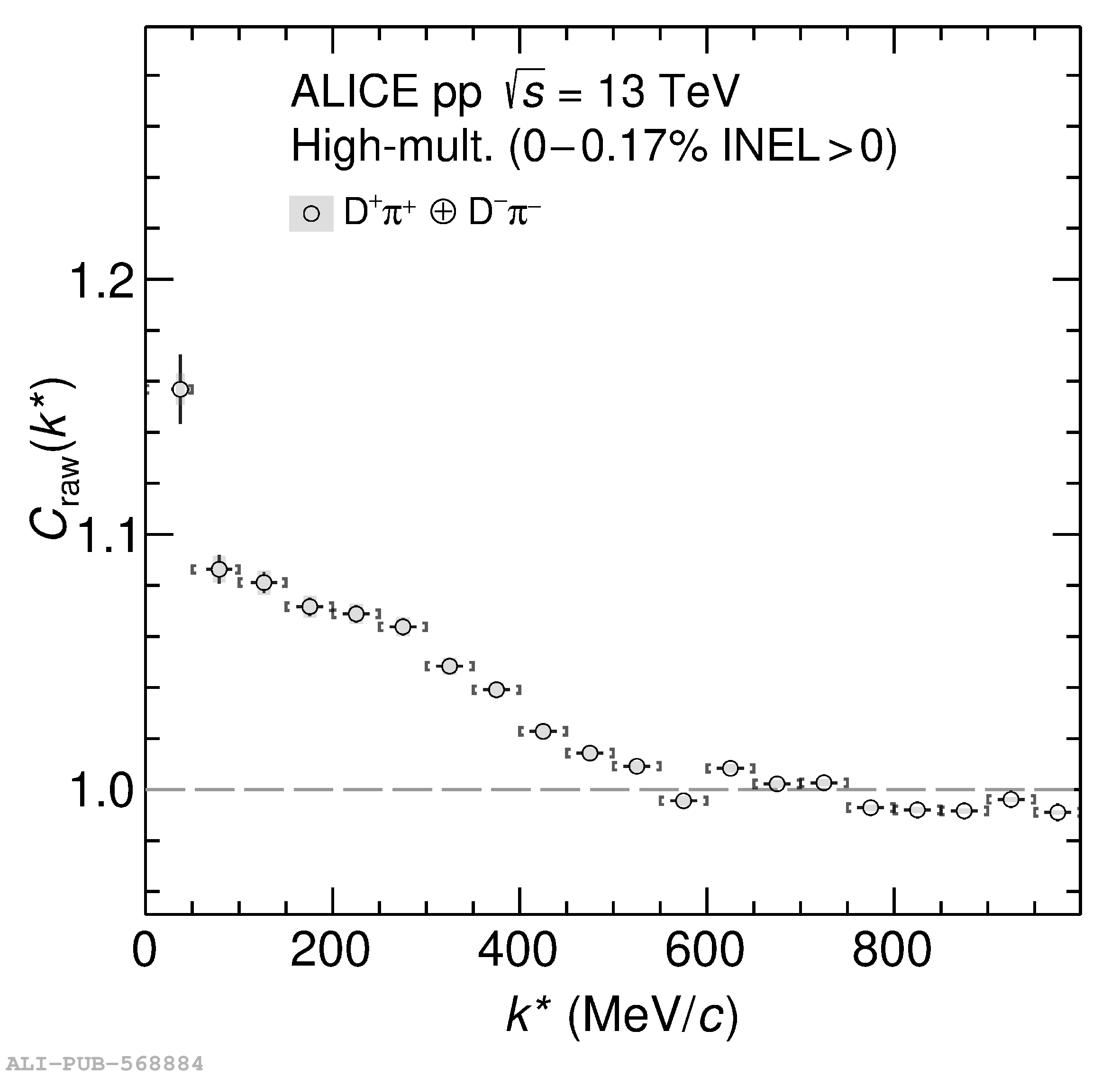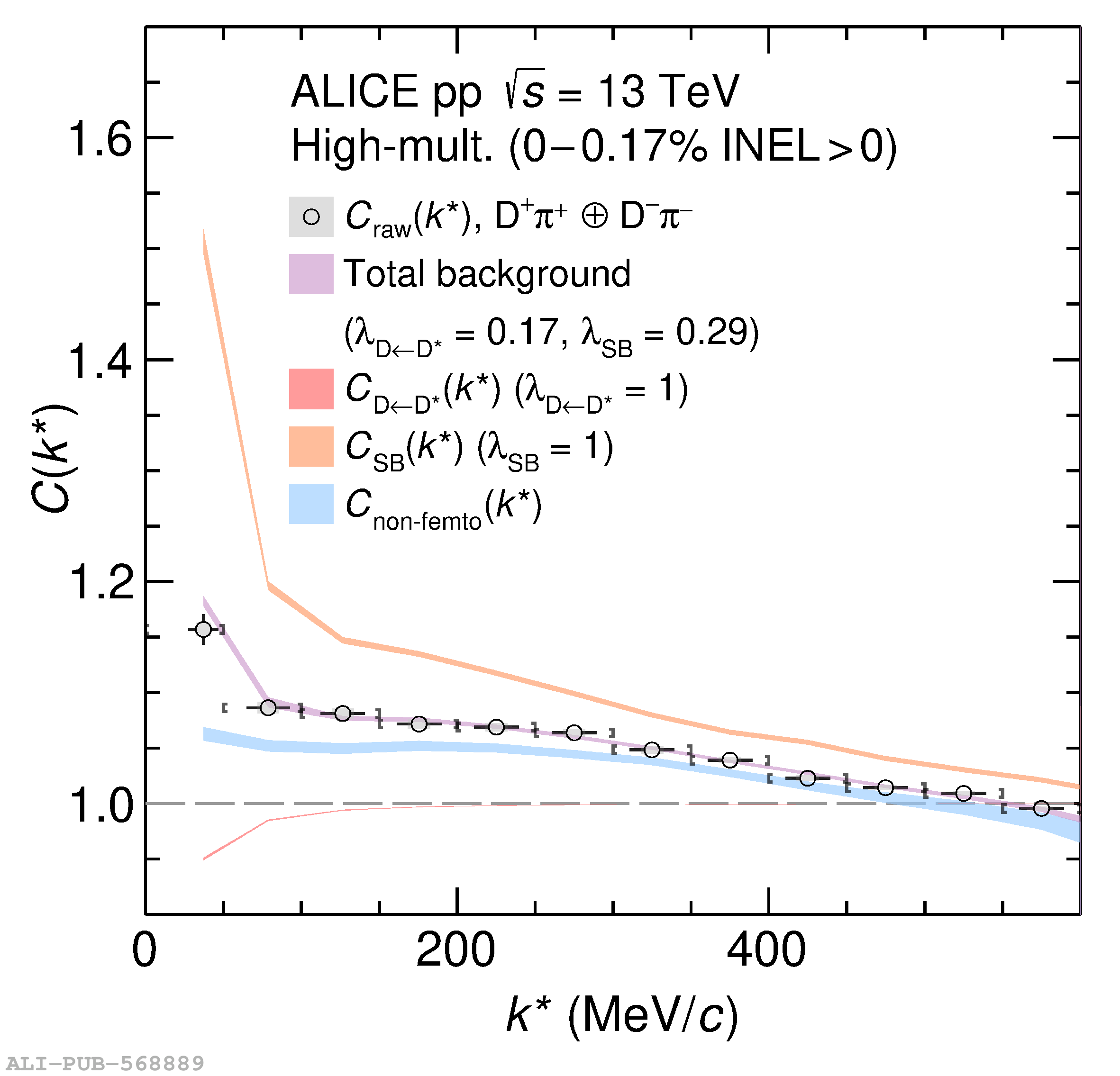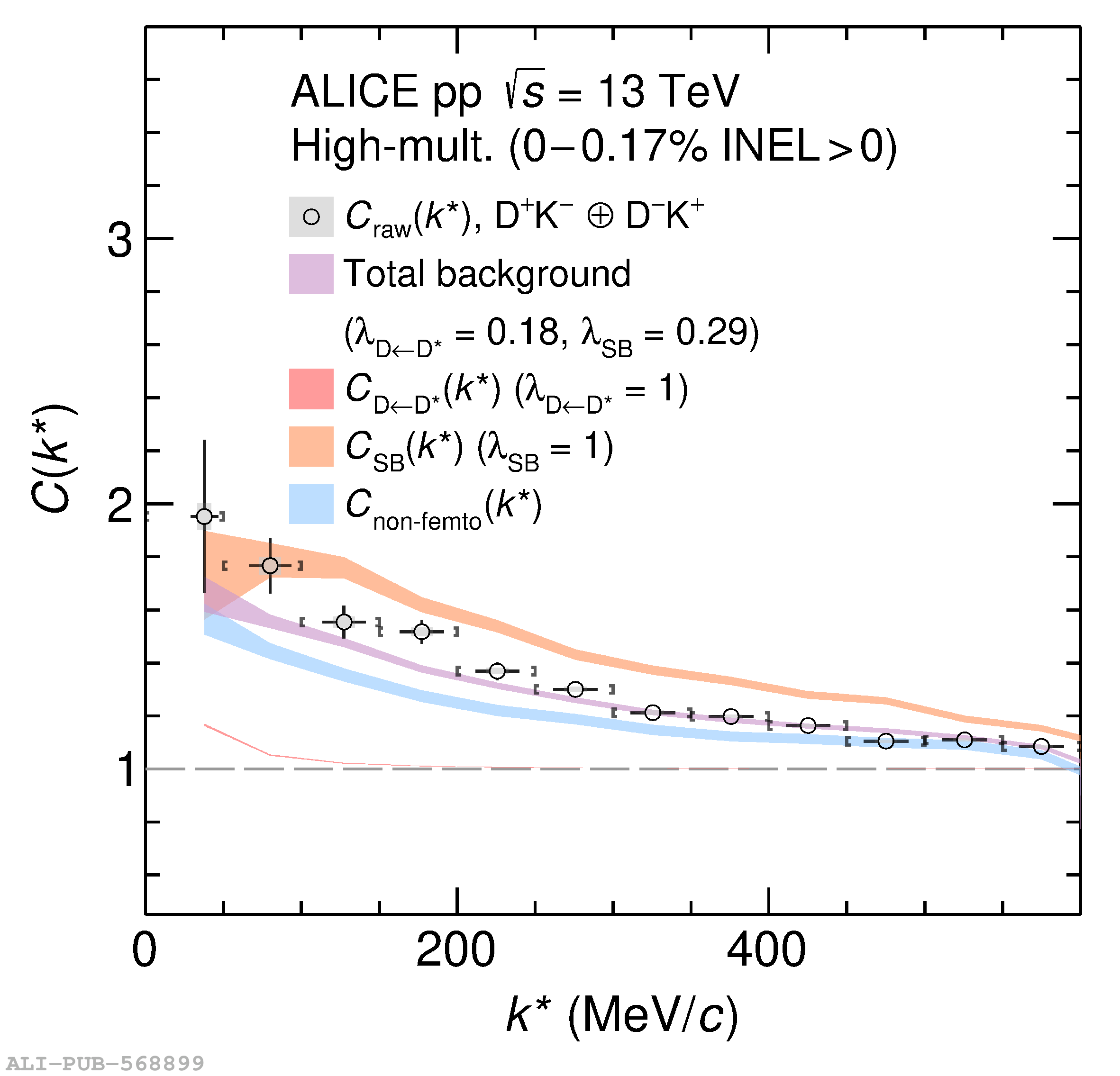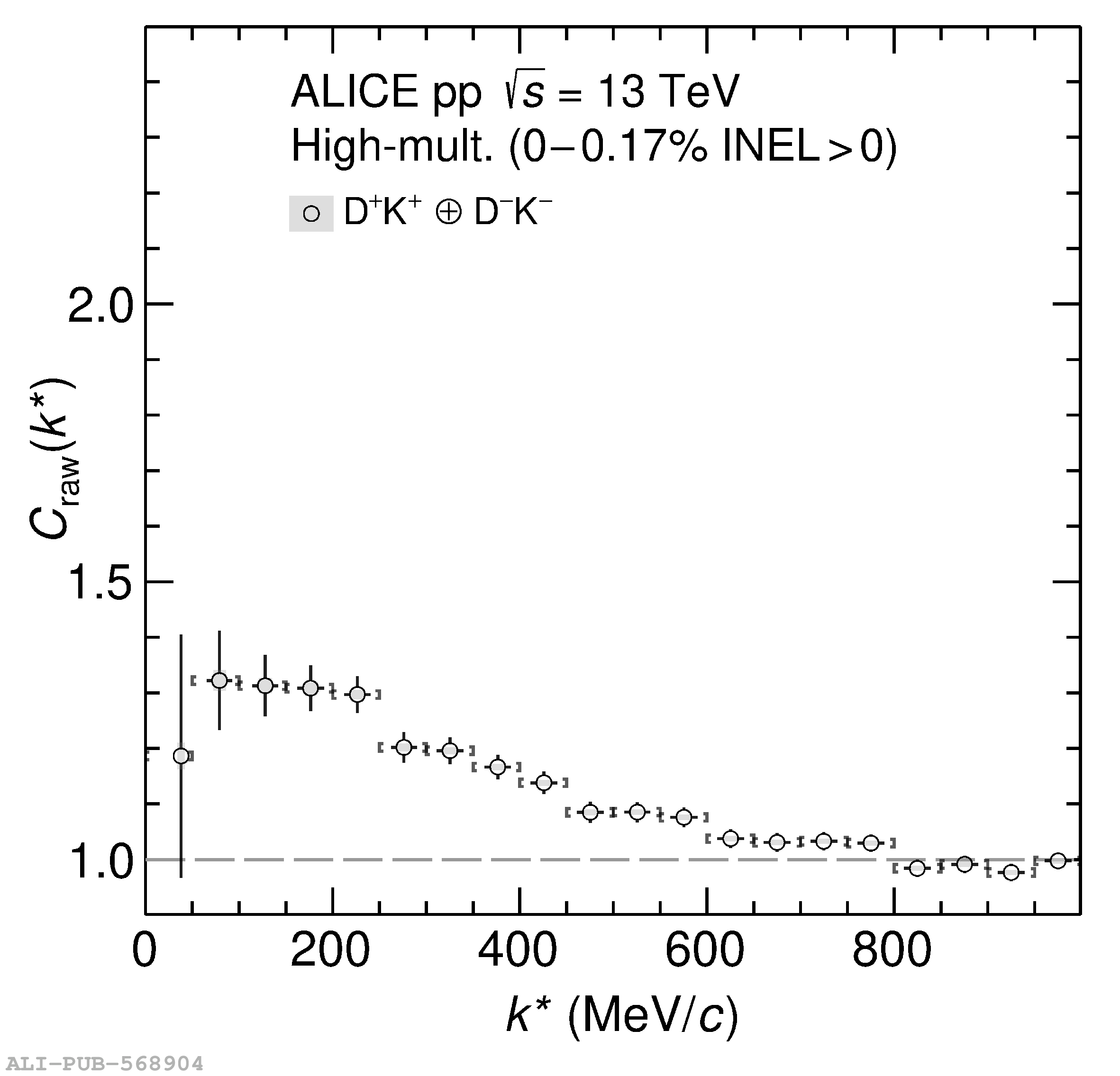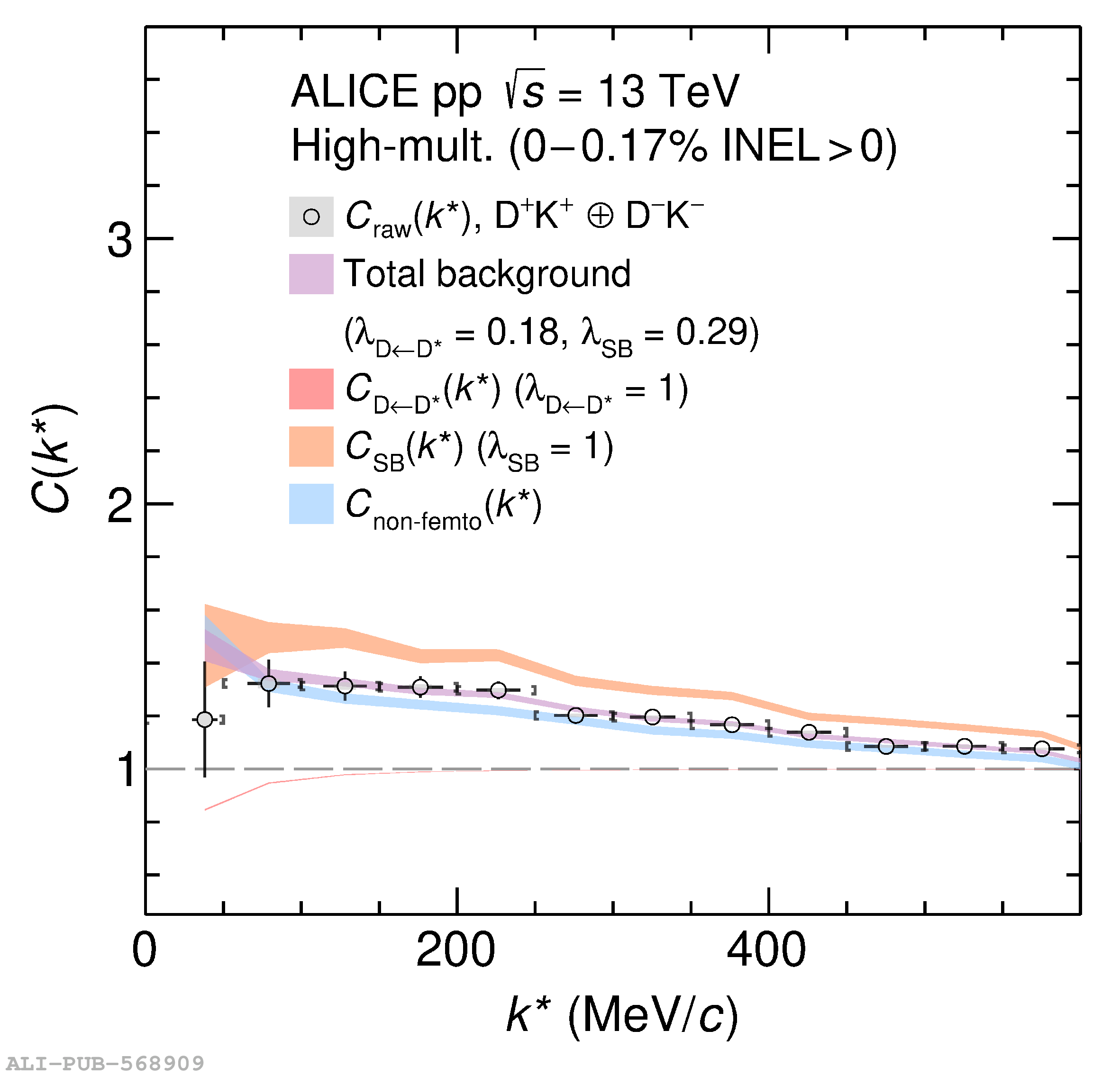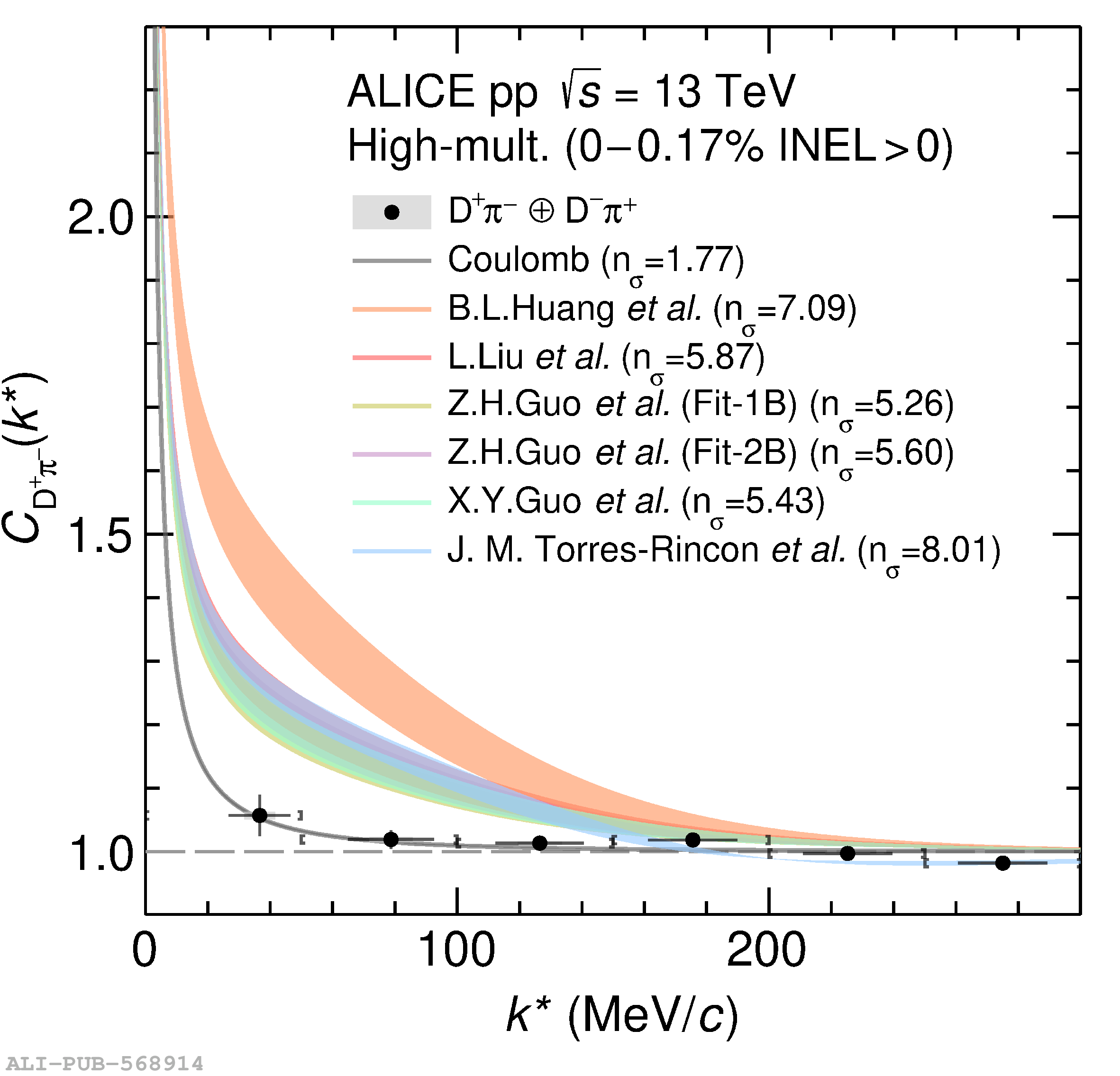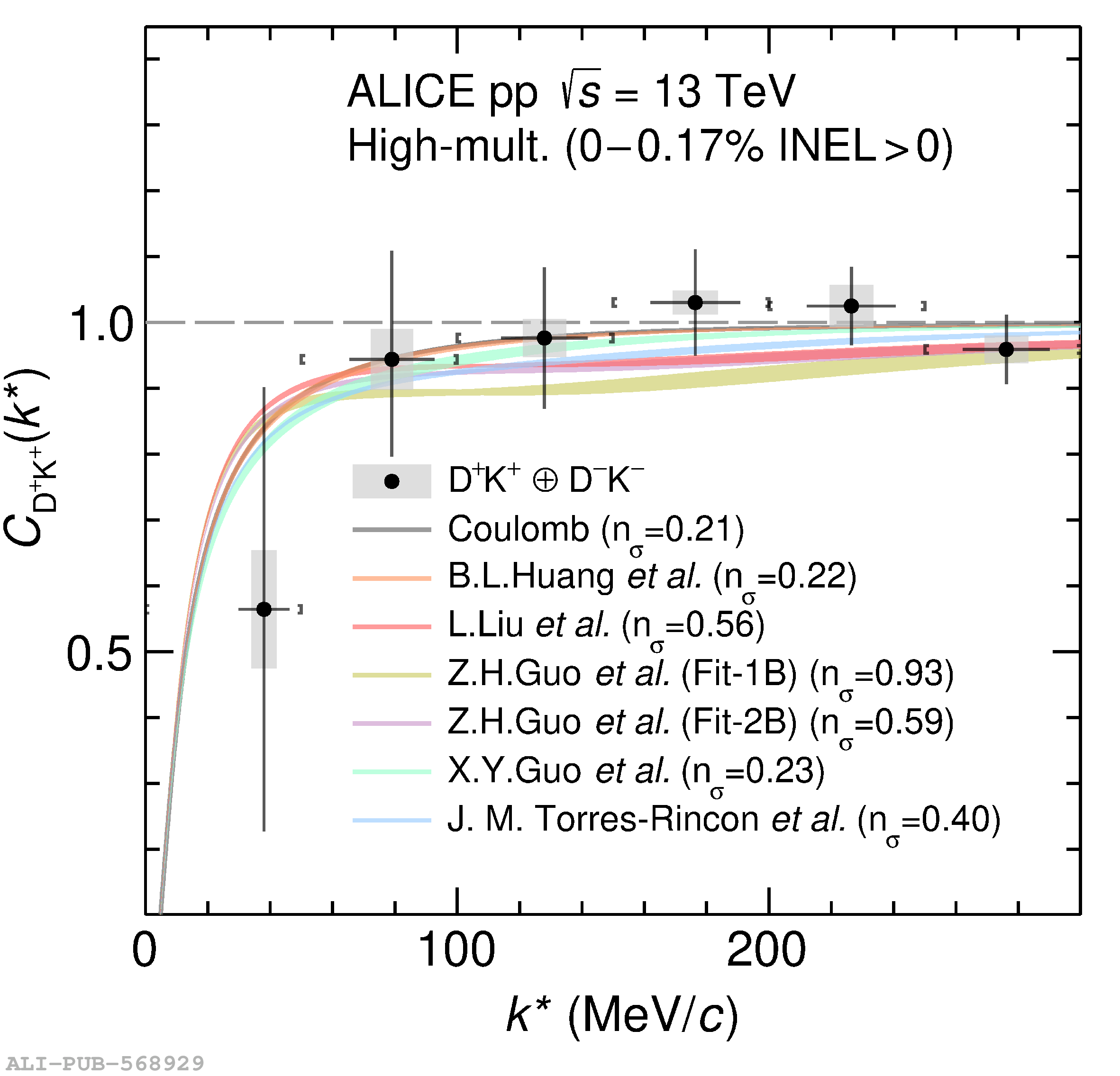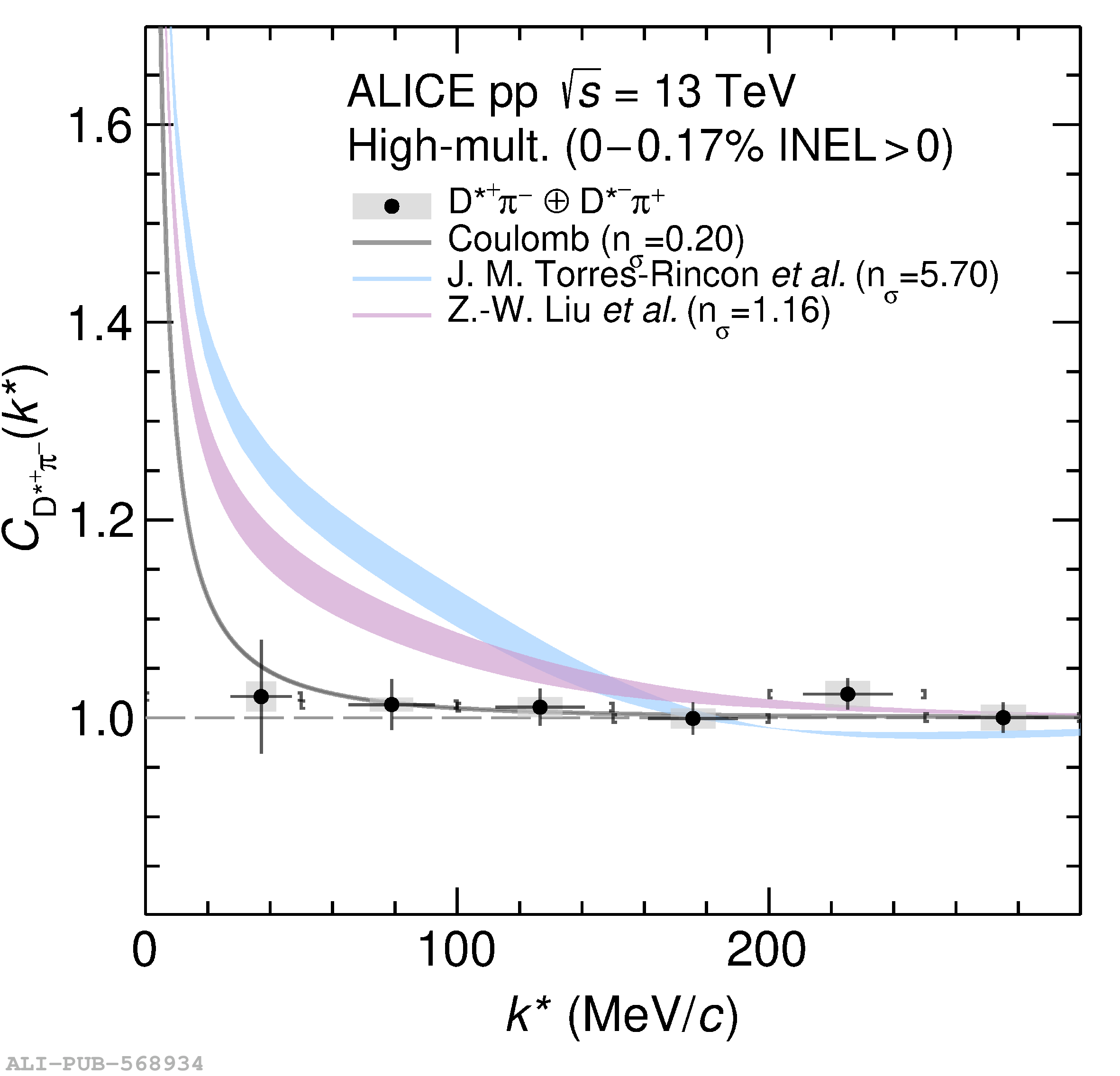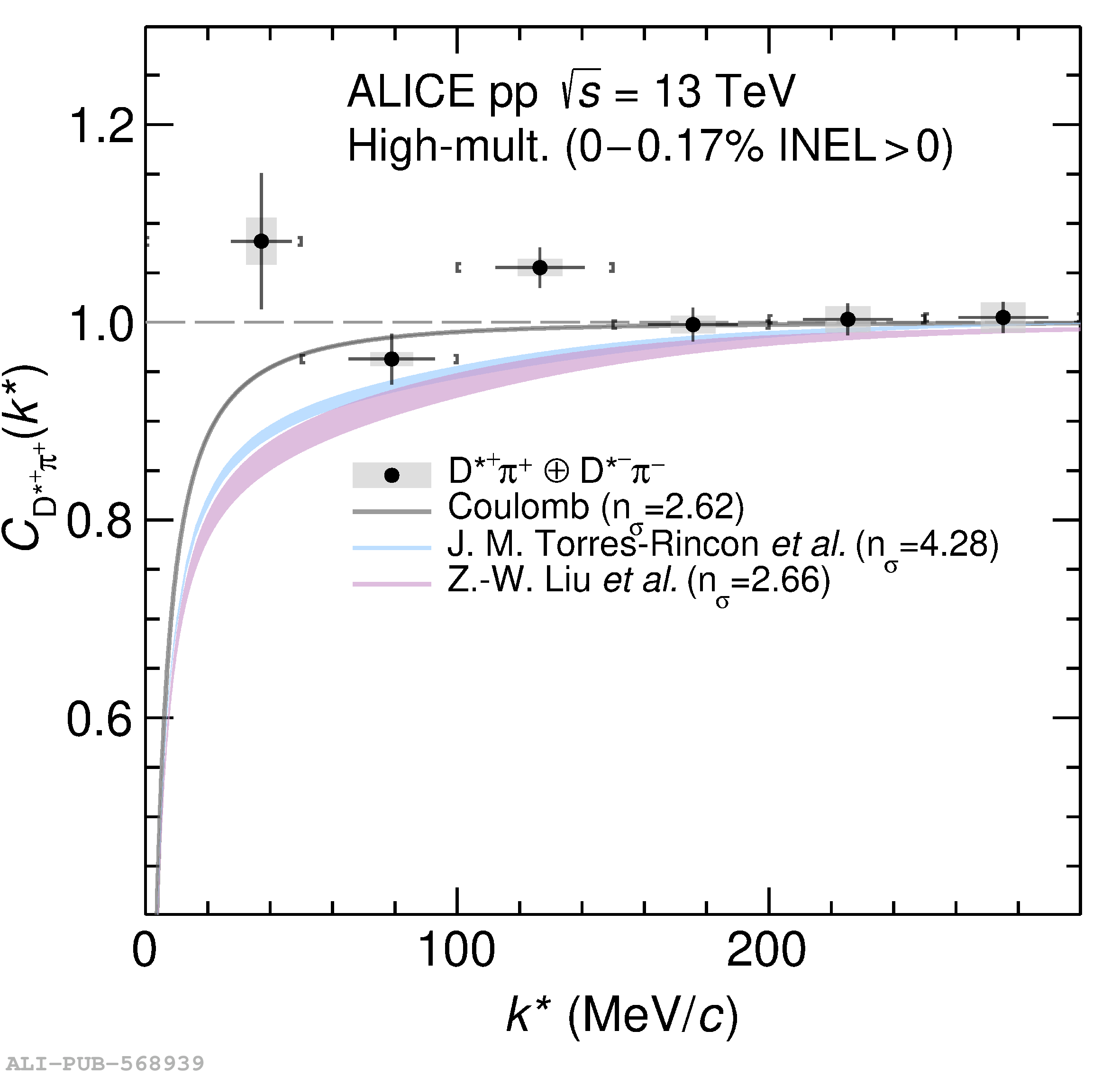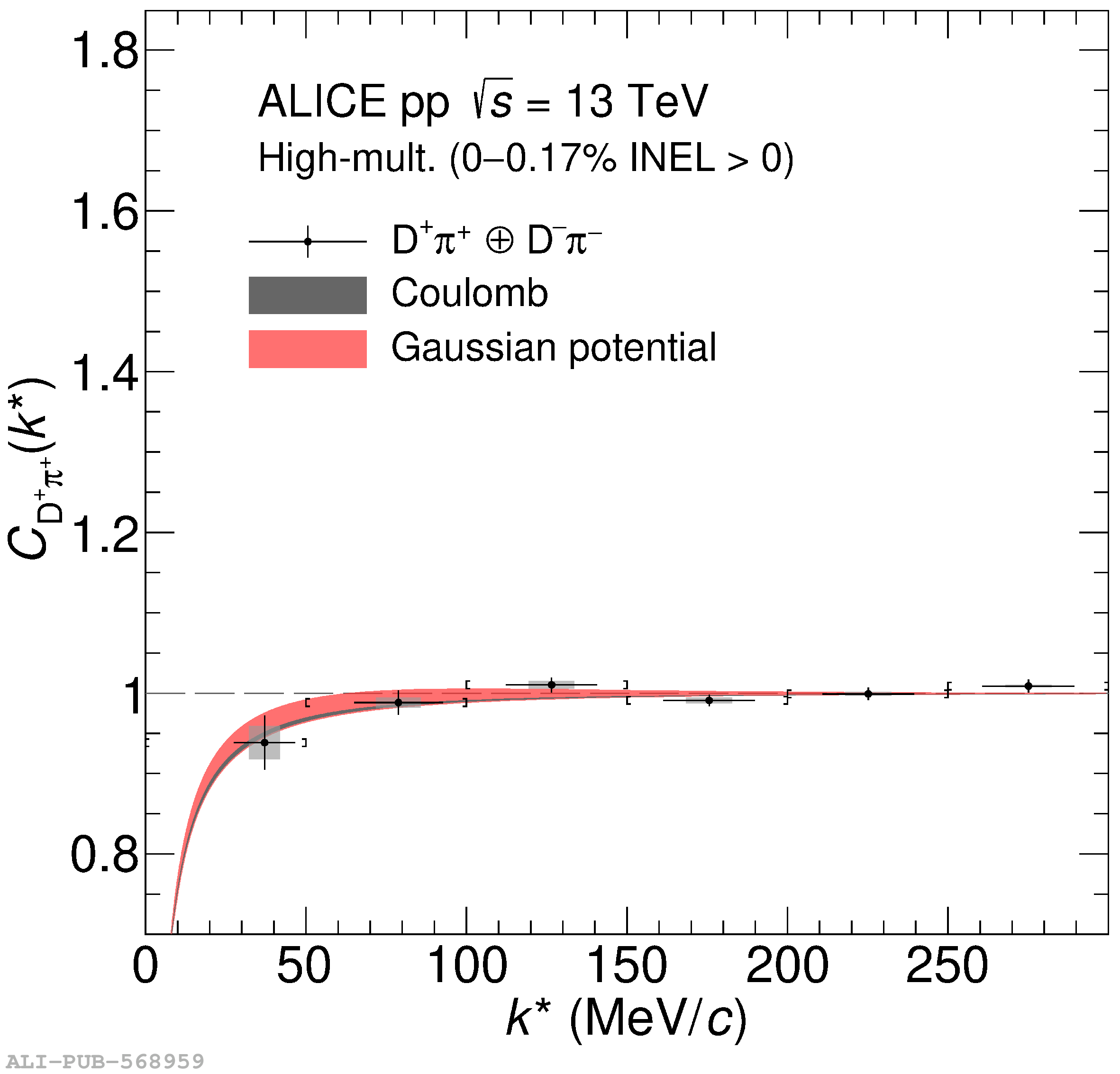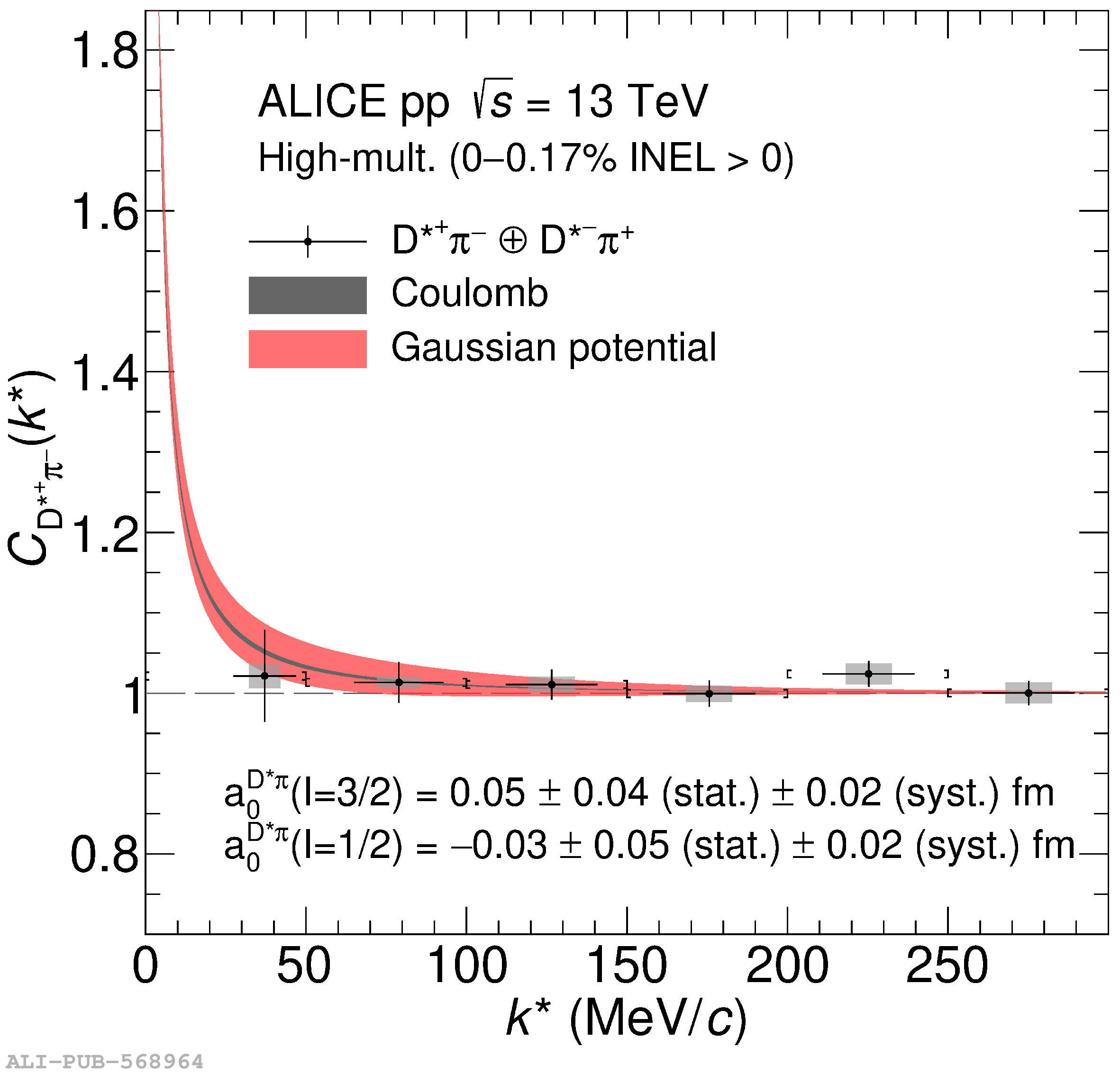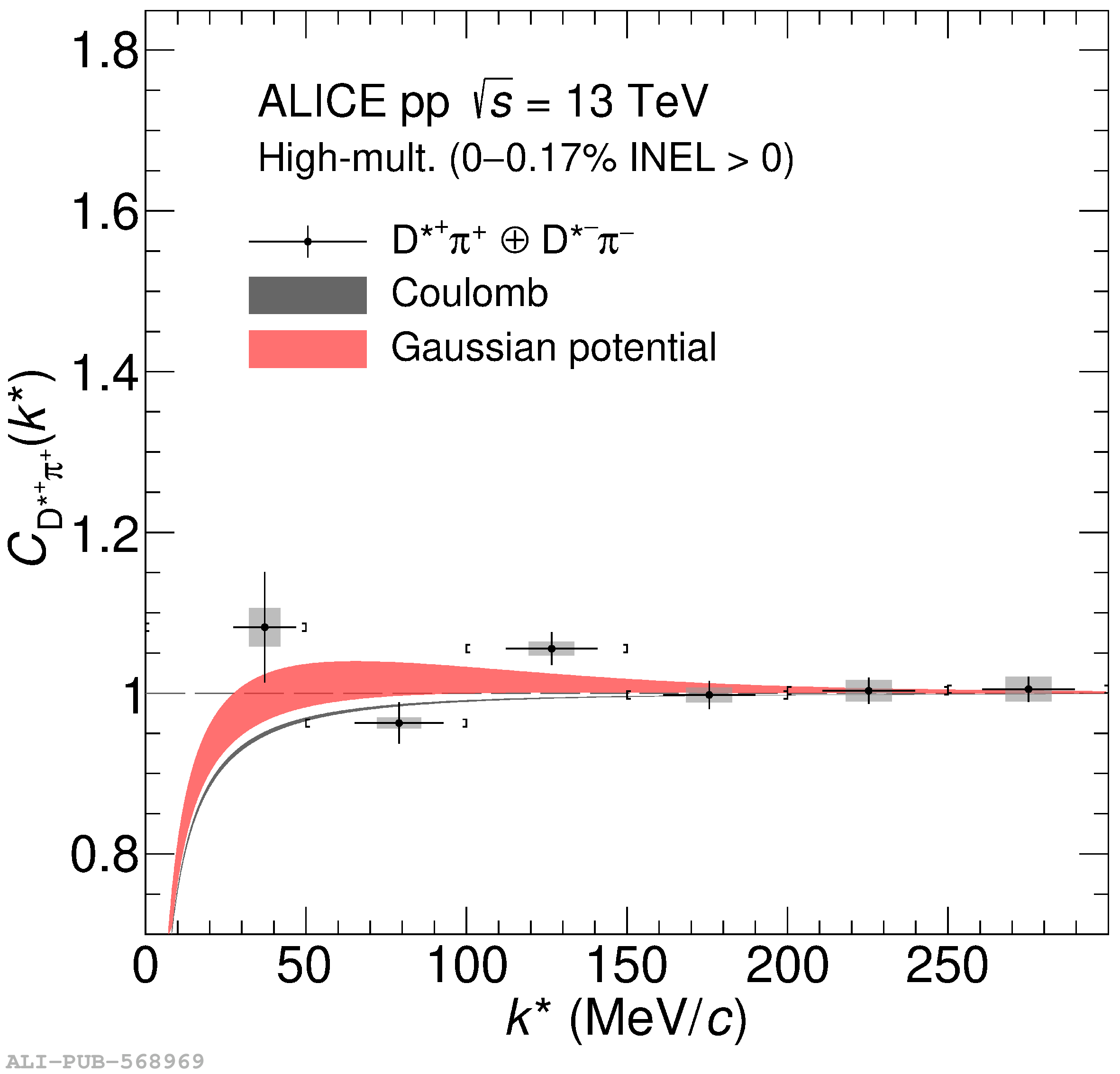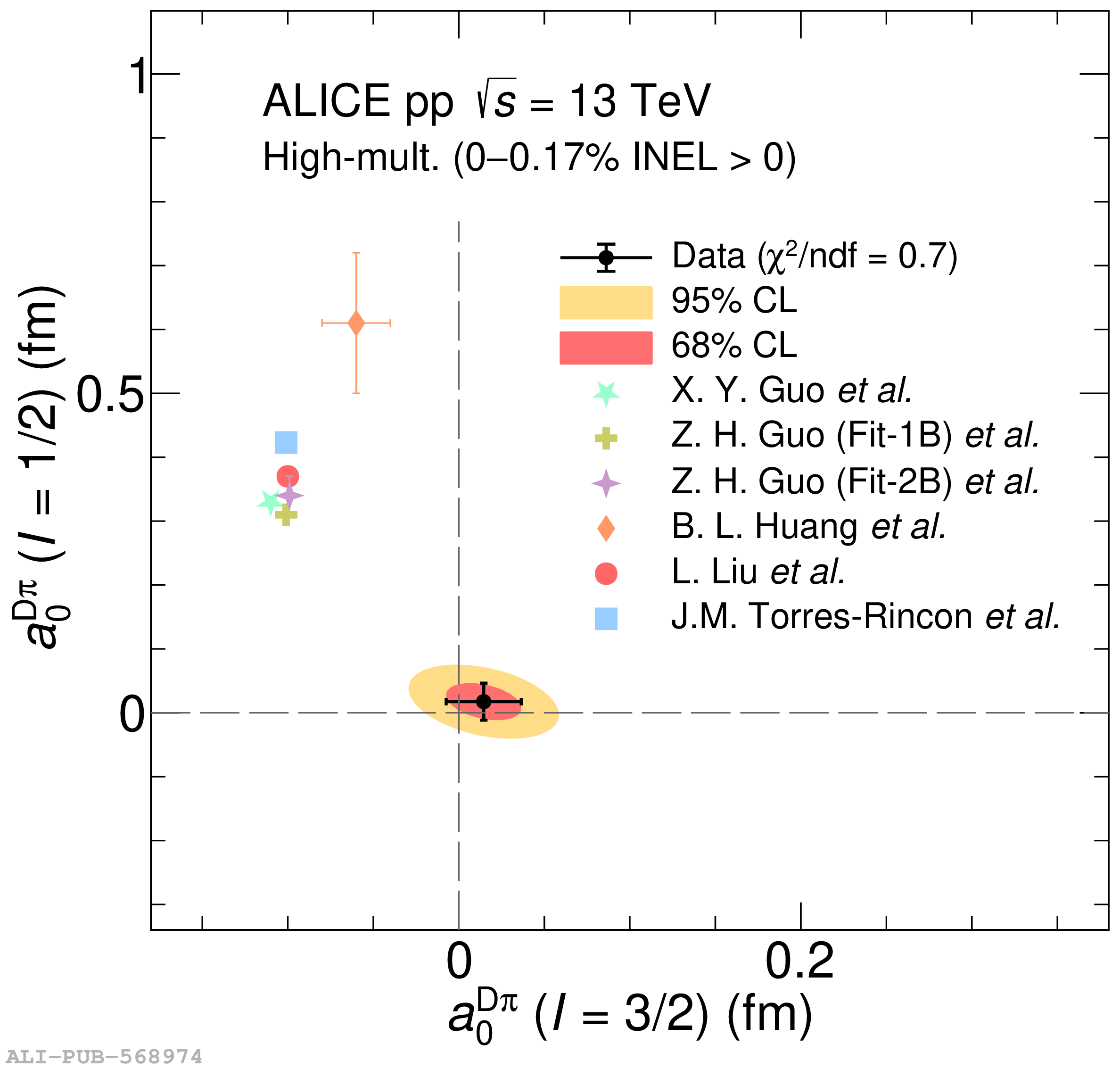The two-particle momentum correlation functions between charm mesons ($\mathrm{D^{*\pm}}$ and $\mathrm{D}^\pm$) and charged light-flavor mesons ($\pi^{\pm}$ and K$^{\pm}$) in all charge-combinations are measured for the first time by the ALICE Collaboration in high-multiplicity proton-proton collisions at a center-of-mass energy of $\sqrt{s} =13$ TeV. For $\mathrm{DK}$ and $\mathrm{D^*K}$ pairs, the experimental results are in agreement with theoretical predictions of the residual strong interaction based on quantum chromodynamics calculations on the lattice and chiral effective field theory. In the case of $\mathrm{D}\pi$ and $\mathrm{D^*}\pi$ pairs, tension between the calculations including strong interactions and the measurement is observed. For all particle pairs, the data can be adequately described by Coulomb interaction only, indicating a shallow interaction between charm and light-flavor mesons. Finally, the scattering lengths governing the residual strong interaction of the $\mathrm{D}\pi$ and $\mathrm{D^*}\pi$ systems are determined by fitting the experimental correlation functions with a model that employs a Gaussian potential. The extracted values are small and compatible with zero.
Phys. Rev. D 110, 032004 (2024)
HEP Data
e-Print: arXiv:2401.13541 | PDF | inSPIRE
CERN-EP-2024-013
Figure group

